.
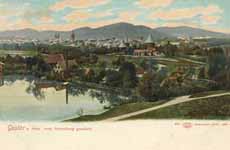
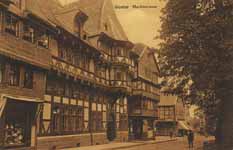
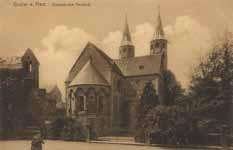
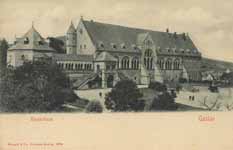
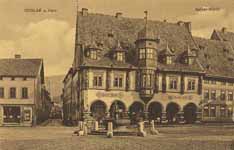

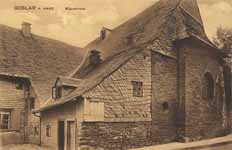
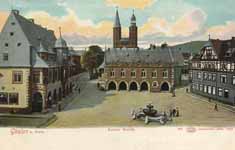
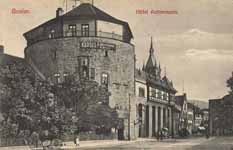
10, 11,
Goslar

Goslar is a historic town in Lower Saxony, Germany. It is the administrative centre of the district of Goslar and located on the northwestern slopes of the Harz mountain range. The Old Town of Goslar and the Mines of Rammelsberg are UNESCO World Heritage Sites.
Geography
Goslar is situated at the northwestern foot of the Lower Saxon Hills: the Harz mountains. The Kahlerberg/Schalke is the highest elevation within the municipal boundaries at 762 m (2,503 ft). The lowest point of 175 m (574 ft) is near the Oker river. Geographically, Goslar forms the boundary between the Hildesheim Börde which is part of the Northern German Plain, and the Harz range, which is the highest, northern-most extension of Germany's Central Uplands. The Hildesheim Börde is characterised by plains with rich clay soils – used agriculturally for sugar beet farming – interlaced with several hill ranges commonly known as the Hildesheim Forest and Salzgitter Hills. Immediately to the south, the Harz mountains rise above the historic borough at a height of 636 m (2,087 ft) (Rammelsberg). Forestry dominates the landscape. Three rivers cross the municipal boundary: the Oker, the Abzucht and the Gose. The Gose river begins approximately 9 km (5.6 mi) south-west of Goslar at the Auerhahn pass (638 m; 2,093 ft) in the Harz mountains. At the northern foot of the Herz Hill (632 m; 2,074 ft) the smaller Abzucht river meets the Gose before it flows into the Oker. The Dörpke and Gelmke streams also flow from the Harz foothills to the south into Goslar where they discharge into the Abzucht.
Neighbouring municipalities
(clockwise from the North): Liebenburg, Vienenburg, Bad Harzburg, Clausthal-Zellerfeld, Langelsheim.
Town districts
Old Town (upper and lower borough and town centre)
Rammelsberg with Siemensviertel and Rosenberg
Georgenberg with Kattenberg
Steinberg
Sudmerberg
Jürgenohl with Kramerswinkel
Baßgeige
Ohlhof
Incorporated in 1972:
Hahndorf
Hahnenklee with Bockswiese no
Jerstedt
Oker
Climate
Climate Table Jan Feb Mar Apr May Jun Jul Aug Sep Oct Nov Dec Year
Average daily maximum temperature (°C) 10 10 11 12 14 17 18 19 17 15 11 11 13.75
Average daily minimum temperature (°C) 0 0 2 3 5 8 10 10 9 6 4 1 4.8
Mean total rainfall (mm) 110 80 90 60 60 70 70 90 100 120 120 100 1070
History
Goslar.jpg
Main article: History of Goslar
Goslar has a rich history stretching from the Neolithic via the ancient Saxon times, the Holy Roman German empire, Reformation, Enlightenment, German Nationalism, Emancipation, Militarism, German Imperialism, Democratisation, the National Socialist Dictatorship including Racism & Genocide, the Iron Curtain, up to German reunification. In addition Goslar can field an exciting industrial history.
Salian Emperor Henry I founded the town in the 10th century after the discovery of silver deposits in the nearby Rammelsberg. The wealth derived from silver mining brought Goslar the status of an Imperial City, which attracted the interest of the Holy Roman Emperor.
The mediæval Imperial Palace (Kaiserpfalz Goslar) was built in the 11th century and became a summer residence for the emperors, especially Henry III of Germany who visited his favourite palace about twenty times. Henry is buried in Goslar.
In the winter of 1798, the coldest of the century, the young English poet William Wordsworth stayed in Goslar. To dispel homesickness he started to write a few verses about his childhood, which would eventually evolve into the masterpiece that was published in thirteen volumes after his death as The Prelude.[4]
Goslar's Mediæval cathedral was built at the same time as the Mediæval Imperial Palace, but only the porch survived; the cathedral itself was torn down in 1820. Other sights are the town hall (16th century) and the ancient mines of the Rammelsberg, which now house a mining museum.
In the cold war, Goslar was a major garrison town for the German army and the Border police. After the fall of the Berlin wall, the barracks were vacated and a major economic factor was lost.
Demographics
Population statistics
Year Inhabitants
1821 7,547
1848 9,748
1871 11,900
1885 15,997
1905 23,640
1925 27,881
Year Inhabitants
1933 29,538
1939 34,371
1946 47,855
1950 53,804
1956 53,236
Year Inhabitants
1961 54,151
1968 53,819
1970 52,649
1975 53,963
1980 52,556
Year Inhabitants
1985 49,636
1990 46,251
1995 46,142
2000 44,278
2005 43,119
(count: December 31 of each year)
Politics
Goslar's Medieval Imperial Eagle
Town council
For the legislature from November 1, 2006 until October 31, 2011, the seats were allocated as follows:
SPD: 16 seats (38,38 %)
CDU: 13 seats (32,98 %)
FDP: 5 seats (11,69 %)
Citizens' Alliance: 2 seats (5,81 %)
Goslarer Linke: 2 seats (5,75 %)
Grüne: 2 seats (5,35 %)
Lord Mayor
Dr Oliver Junk was elected as Lord Mayor in September 2011.
Members to Parliament
European (Constituency: Southern Lower Saxony), Godelieve Quisthoudt-Rowohl (CDU), Erika Mann (SPD)
Bundestag (Constituency 52: Goslar, Northeim, Osterode), First: Wilhelm Priesmeier (SPD), List: Hans Georg Faust (CDU)
Landtag Lower Saxony (Constituency 16: Goslar), First: Petra Emmerich-Kopatsch (SPD), List: Dorothee Prüssner (CDU)
Twin towns
See also: List of twin towns and sister cities in Germany
Goslar is twinned with:
France Arcachon, France, since 1965
Czech Republic Beroun, Czech Republic, since 1989
Poland Brzeg, Poland, since 2000
Israel Ra'anana, Israel, since 2006[5]
United Kingdom Windsor and Maidenhead, United Kingdom, since 1969
Culture and sights
Mediaeval Imperial Palace (Kaiserpfalz)
Zwinger tower with pond
For a detailed description of Goslar's tourist attractions, please refer to Goslar's Wikitravel entry.
Theatre
The Odeon Theatre is the town's major theatre venue. It has been recently refurbished. It is host to several productions of visiting theatre companies and music groups.
The alternative theatre Culture Power Station Harz or Kulturkraftwerk Harz is housed in a disused powerstation. Being run by volunteers, it produces contemporary theatre, comedy and hosts mostly alternative cultural events. Here the annual Goslar Fringe Culture Days are held from the start to mid June.
Museums
Museum and visitor's mine Rammelsberg, an Anchor Point of ERIH, The European Route of Industrial Heritage
Museum in the Mediaeval Imperial Palace (Kaiserpfalz)
Monks' House, Mönchehaus Museum for Contemporary and Modern Arts
Goslar Museum
Museum in the Gothic Town Hall
Zwinger Tower and Dungeon, Museum for Late Mediaeval History
Religion
The Frankenberg Church
Protestant: -Lutheran
Congregation Marktkirche, Market Church (build 1151, North Tower mountable)
Congregation Neuwerk, Newark Church
Congregation St. Stephani, Saint Stephen
Congregation Zum Frankenberge, Frankenberg Church
Congregation Gustav-Adolf-Stabkirche, Gustav Adolf stave church in Hahnenklee
Congregation Martin-Luther-Kirche, Martin Luther Church
Congregation St.Paulus Kirche, St. Paul's Church, in Oker
Congregation St. Georg, St. George
Congregation St. Johannes, St. John
Parish Church St. Kilians in Hahndorf
Congregation St. Lukas, St. Luke
Parish Church St. Matthäus, St. Matthew's, in Jerstedt
Congregation St. Peter
Baptist
Congregation Christuskirche, Church of Christ
Roman Catholic
Congregation St. Jakobi, Saint James the Greater (built in 1073, Goslar's oldest romanesque church still in use)
Congregation Maria Schnee, St. Mary in the Snow in Hahnenklee
Congregation St. Barbara (part of St. James's)
Congregation St. Konrad, St. Conrad (part of St. James) in Oker
Congregations St. Benno & St. George
Abbey St. George
Islamic Faith
Mosque of the Turkish-German Society
Goslar Mosque
Sports
Situated at the foot of the Harz hills, Goslar offers a great deal of outdoor pursuit, from swimming to rock climbing; from motor sports and aviation to sailing and cross-country biking.
The oldest and most traditional sports club is the MTV Goslar (founded in 1849). Its main facilities, a football pitch and gymnasium are located at the Golden Meadow (Goldene Aue) site.
The football department of Goslarer SC 08 earned the right to play in the fourth division Regionalliga Nord in 2009-10 after winning the Oberliga Niedersachsen championship.[6]
Celebrations and Events
In the year 2006 Goslar hosts the Salier Year to celebrate the foundation of this ancient German Imperial dynasty a millennium ago.
Other events include:
Annual award (since 1975) of the "Imperial Ring" to a personality who has made an outstanding contribution to society and the arts. Its laureates include Henry Moore, Joseph Beuys, Christo, Dani Karavan etc.
Goslar International Concerto Days, Mid to End August
The Goslar Fair, Beginning to Mid July
Annual Artisans market in the old town, usually beginning of August
Old Town Festival, mid-September
Hanseatic Days, Spring (usually during the Easter holidays)
Panoramic view from the market church of Goslar
Economy and infrastructure
Half-timbered houses at the river Gose
Hotel Kaiserworth
The town centre of Goslar serves as a regional shopping centre to the Northern Harz region. Here department stores, several supermarkets, elegant boutiques and restaurants can be found. Once weekly, there is also a market, where farmers sell their local produce. There are also several car dealerships in the borough, some of whom specialise in either discount/reimport or custom car sales.
The tourism sector is a booming sector in Goslar. Several hotels and bed and breakfasts are located in or near the town's centre. In addition, the town has become a popular resort for the elderly and there are many care homes in the town.
Goslar has become a popular conference venue. The Achtermann Hotel and the Kaiserpfalz are popular conference centres, host to the annual German Road & Transport Tribunal Days: the Deutscher Verkehrsgerichtstag
Largest employers in Goslar are H.C. Starck (chemistry company), the tourism sector, and the civil service. Many residents of Goslar commute to Salzgitter, where car production, steel works and white collar jobs are based.
The Dr.-Herbert-Nieper-Krankenhaus is a privately owned hospital of the Asklepios Harzkliniken group serving the greater Harz region. A new annex for intensitive medicine is under construction. There are several general practitioners, dentists, and specialist practitioners distributed across the town. There is an emergency service in place.
Transportation
Goslar has excellent road links, as well as rail links connecting it to the major European population centres. Goslar also serves as a major transport hub for the Upper Harz mountains (highest peak at 1,141 m (3,744 ft) altitude).
With the A 7 and the A 395 there are two main Autobahns/Highways within 20 minutes reach of Goslar. The A 7 connects Hamburg/Hanover in the North to Frankfurt/Munich in the South. The A 395 branches off the main east-west Autobahn A 2 at Brunswick and ends at Vienenburg, some 12 km (7.5 mi) east of Goslar. The A 2 connects Berlin – to the East – to the Ruhr Area and the Netherlands in the West. The Federal highways B 6 and B 82 converge at Goslar and are routed via the four-lane by-pass past the town centre. The B 6 is mostly four-laned and approaches Goslar via the scenic Hildesheim–Salzgitter route.
Goslar is served by the German Railway network (Deutsche Bahn) lines Hanover–Goslar–Halle (Saxony-Anhalt) as well as Brunswick–Goslar–Kreiensen. The central railway station is located in the vicinity of the town centre. There is a park-and-ride system for commuters to Brunswick and Hanover.
At the railway station there is a central bus station with busses travelling routinely to various destinations in the Harz mountains. The buses are from DB Stadtverkehr.
Media
The regional newspaper is the Goslar Chronicle Goslarsche Zeitung which has an estimated daily readership of 90,000. The General-Anzeiger is a gazette owned by the Heinrich Bauer publishing group with an editorial office in Goslar. Aside from this there are two freely distributed gazettes.
Radio Okerwelle GoslarRadio is the regional private radio station based in Brunswick, which broadcasts contemporary music, information and news in the German language to the Brunswick region.
Education
The three tier education system in Goslar district falls under Lower-Saxon legislation. The language of tuition at all schools is the German language. The nine primary schools are distributed across the entire municipality and the associated hamlets. There are two advanced secondary schools (5-12/13), the Christian-von-Dohm-Gymnasium, and the more traditional Ratsgymnasium, both of which prepare their students for an academic career. Three intermediate level schools (5-10), the Andre-Mouton Realschule, the Realschule Hoher Weg, and the Realschule Goldene Aue prepare their pupils for a professional career. Furthermore, two vocational schools (5-9/10) exist: the Hauptschule Oker, and the Hauptschule Kaiserpfalz. The Sonderschule caters to children with learning difficulties and special needs.
The supplementary public Waldorf school Harz – Branch Goslar, educates its students along a more spiritual line termed anthroposophy, which is based on the teachings of the Austrian pedagogue Rudolf Steiner.
At the 10-12 level there are four job training colleges located at Goslar in crafts, economics, and care for the elderly for students from Goslar district and beyond.
The nearest University from Goslar is the old venerable Engineering and Mining School at Clausthal-Zellerfeld situated in the Upper Harz mountains some 21 km (13 mi) South of Goslar within Goslar district. Some 80 km (50 mi) to the South the highly acclaimed University of Göttingen (founded by King George II of Great Britain) is based.
The Community College (Volkshochschule) of the district Goslar is dedicated to life-long learning.
The Izmir University of Economics, an Izmir-based Turkish university, is on the way to establish an international university in Goslar.
Persons
Siemens Family. The ancestral home of the Siemens family, who can count toward their more famous offspring, the Prussian-British-Russian industrial pioneers Werner von Siemens, Sir William Siemens and Carl von Siemens, is in Goslar
Henning von Tresckow (1901–1944), German military officer and leading anti-Hitler conspirator, was a student at the Goslar Realgymnasium (now Ratsgymnasium Goslar) from 1913 until 1917, when he left to join the army. He boarded in a private home near the school since his own home was far away.
Ernst Jünger (1895–1998), German soldier (recipient of the Pour le Mérite decoration in World War One) and author, lived in Goslar from December 1933 to 1936. This time represented the beginning of his innere Emigration, a distancing himself from direct political commentary, as he left Berlin following the Gestapo search of his house in April 1933
People from Goslar
Henry IV, Holy Roman Emperor (1050–1106), King of Germany and Holy Roman Emperor
Maurice, comte de Saxe (1696–1750), Marshal General of France. Adversary of the Hanoverians.
Wilhelm Ripe (1818–85), painter and graphic designer
Albert Niemann (1834–1861), chemist and pharmacist. Credited with the discovery of cocaine.
Ernst Pistulla (1906–1944), a German boxer. Competed in the 1928 Summer Olympics
Heinz Günther Guderian (1914–2004), officer in the Wehrmacht and later Inspector of Panzer Troops in the Bundeswehr and NATO
Sigmar Gabriel (born 1959), Federal Minister for the Environment, Nature Conservation and Nuclear Safety, politician (SPD)
Aaron Hunt (born 1986), footballer for Werder Bremen.
From Wikipedia, All text is available under the terms of the GNU Free Documentation License

